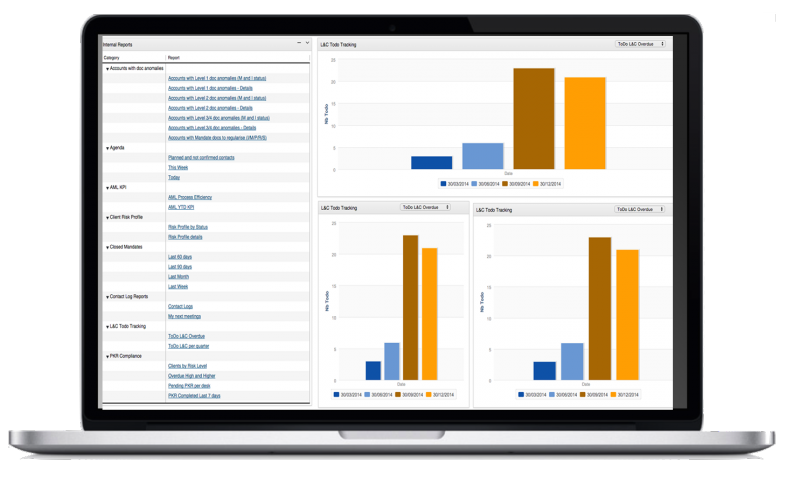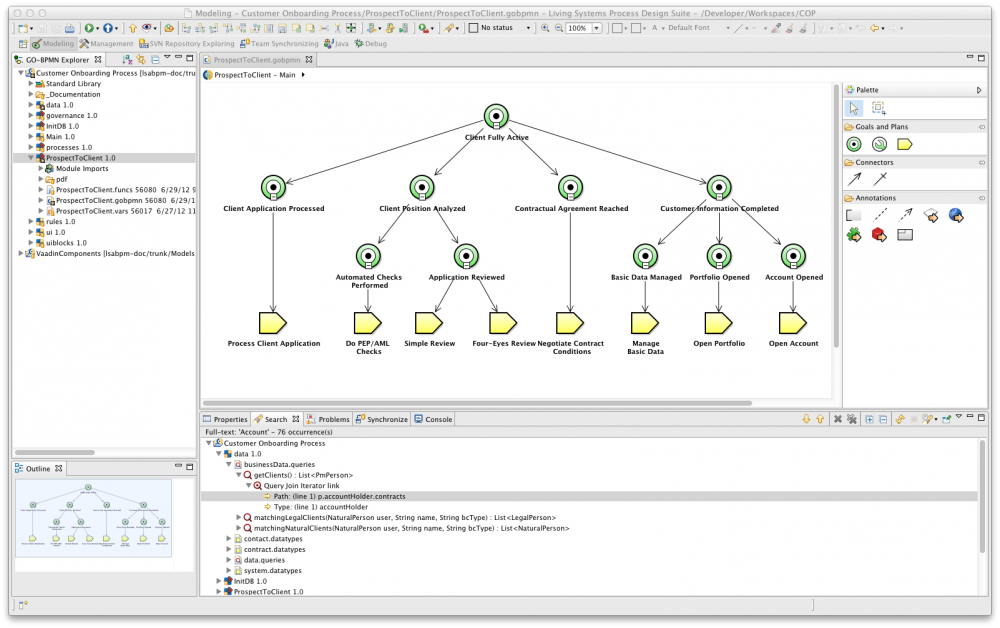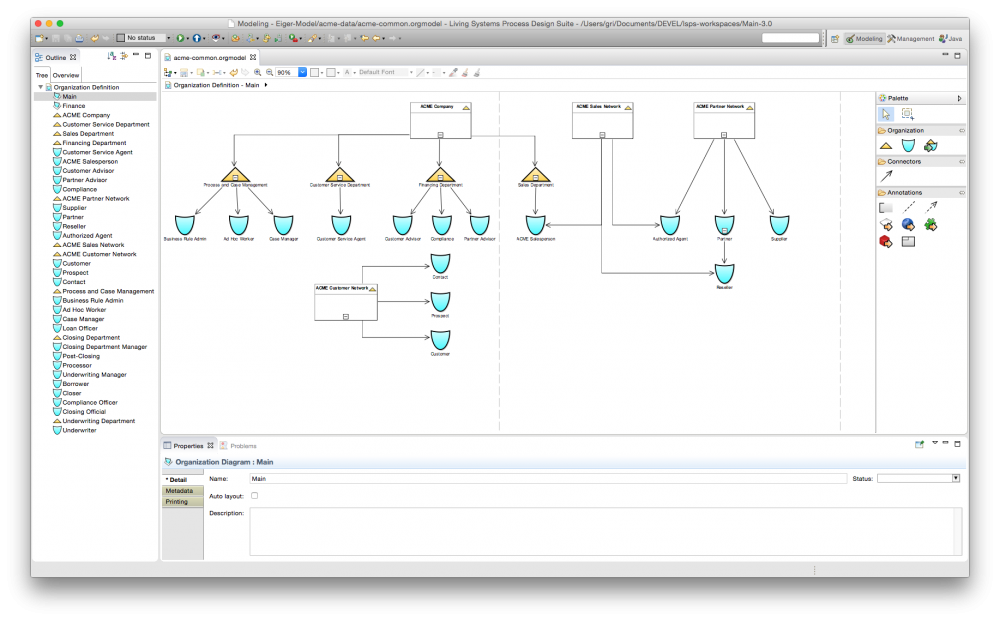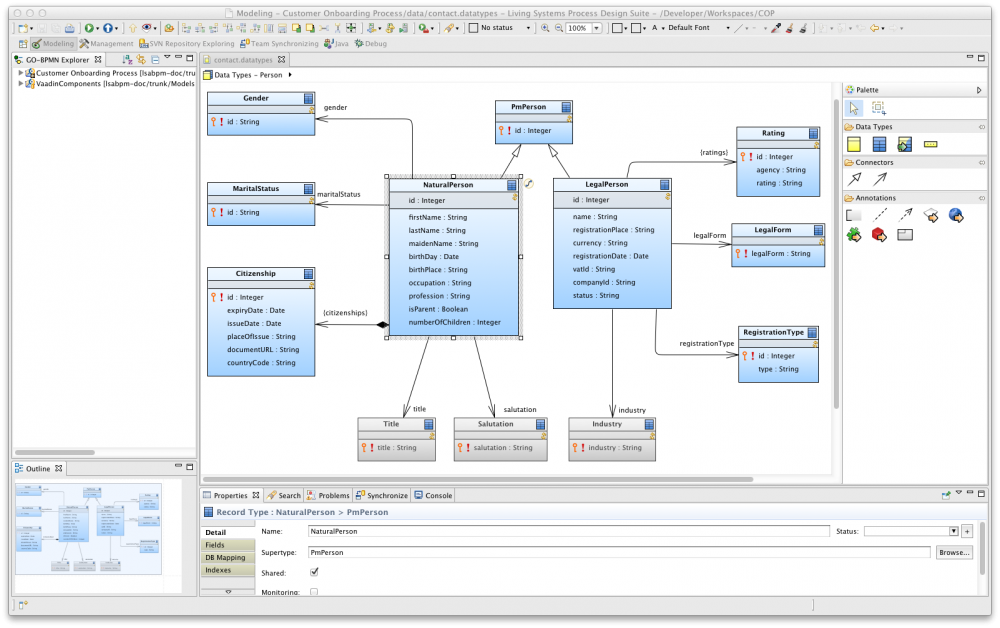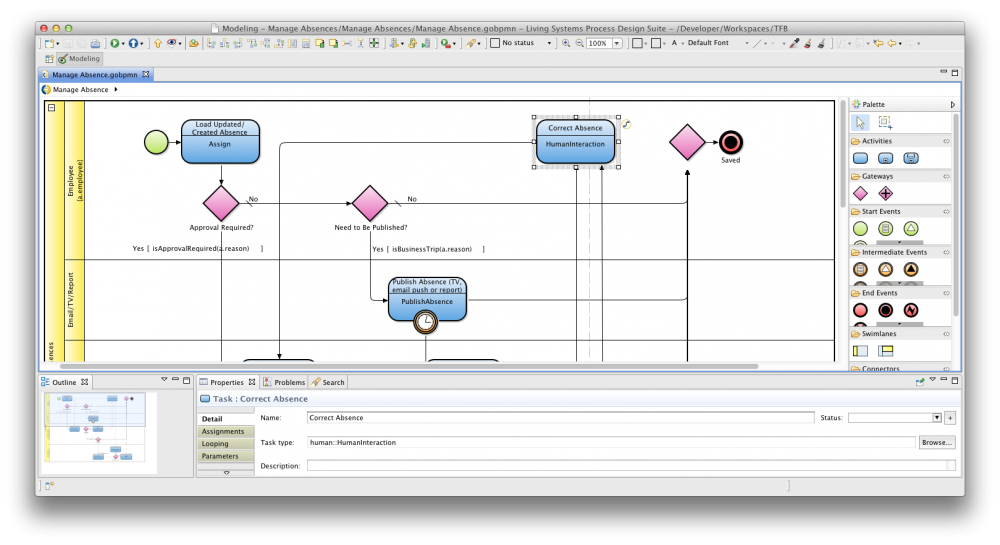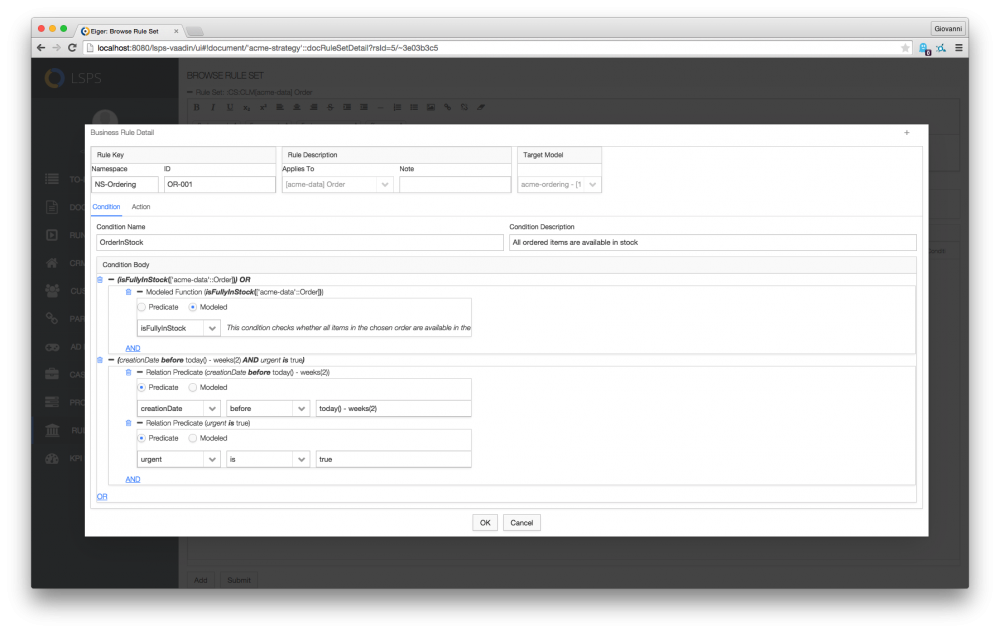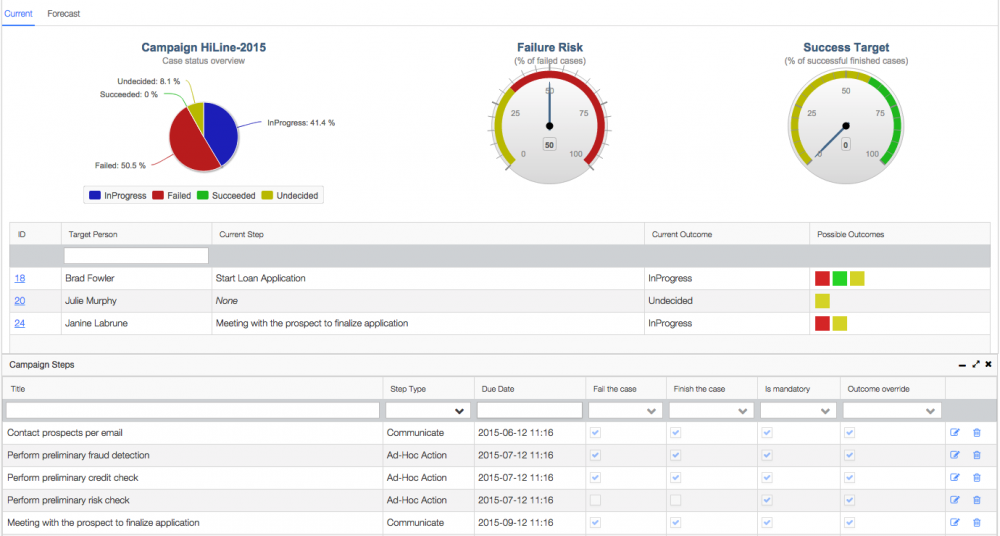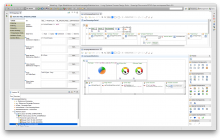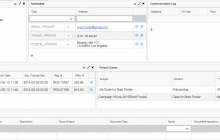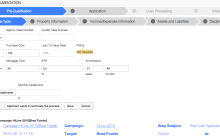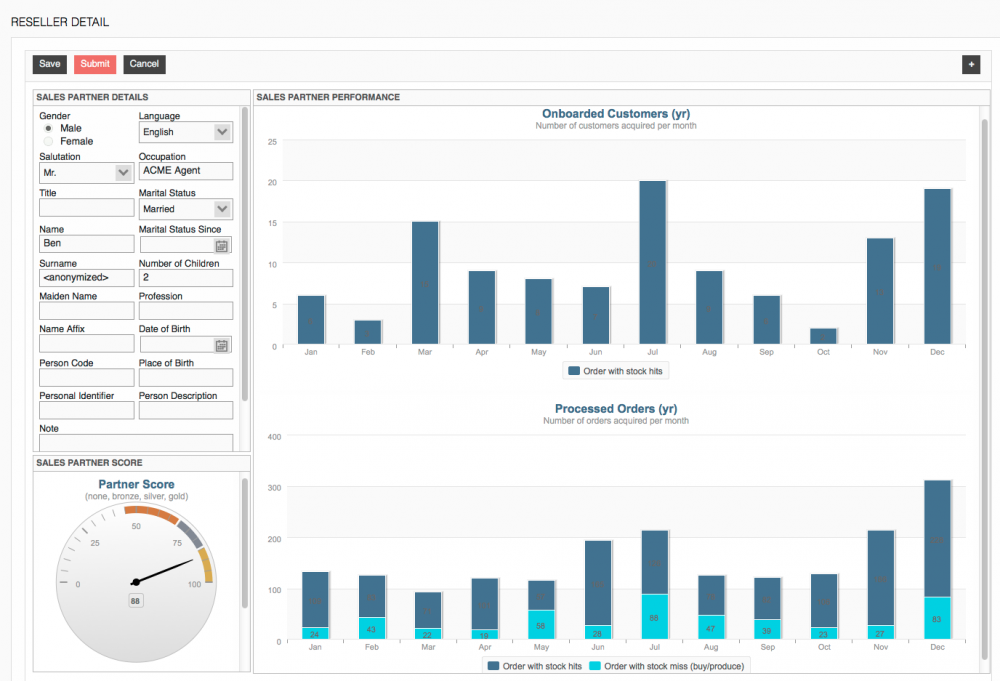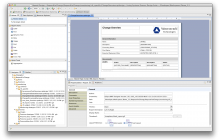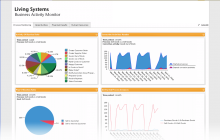Whitestein Technologies is proud to be a Platinum Sponsor to the annual...
You are here
Modeling
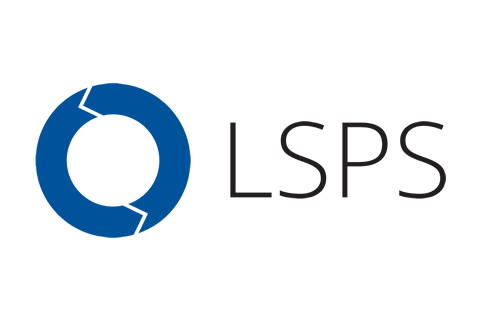
Define Model-driven Case Management and Process Applications
Understand goals, organization, data, and processes to bring them together and connect business needs with system activities. Share the key aspects of intelligent business models at the best level of detail, from value-centric overview maps to accurate battle plans for system and business operational focus.
Goals and Plans
Goal activity modeling represents value-adding business objectives as well as policy and safety governance requirements directly in the process model. Smaller, situation-specific workflows use standard BPMN and are included in activity plans. Goals connect to plans and enable flexible and intelligent process steering and adaptation.
Standard BPMN workflows are effective for simpler processes that handle well defined situations. LSPS enhances them with a whole new modeling level that represents business goals directly. Rather than using flows and gateway, the goal and plan level describes the general process structure with business conditions: this simplifies modeling and allows LSPS intelligent execution to automatically apply the best plan for each situation, to separate operations from governance, and even to seamlessly morph the process if a plan fails or a goal is not relevant anymore.
The Goal & Plan modeling view supports:
- Drag and drop modeling
- Innovative hierarchical representation of business goals defining what a process must/should achieve
- Goals can be defined as an explicit representation of some desired future state
- Top level goal defines the process objective; leaf goals have one or more plans defining how to achieve a goal
- Goals have conditions stating when a goal can be activated and whether it stay relevant to the evolving situation
- Plans have triggering events, enabling conditions, and BPMN activity graphs
- Goals may also be used to ensure that a process execution path is optimized to achieve or maintain a KPI goal
Downloads
Organization Structures
Organizational modeling connects people and systems into an intelligent society that cooperates to fulfill business objectives with maximum effectiveness. Roles, groups, institutions, and individuals combine into a dynamic activation network for both process and information management.
LSPS language captures organization concepts such as business unit, role, and permission within a specific aspect of the overall model. This aspect links to BPMN activities through standard means (pools, lanes, or direct activity parameters), and at the same time steers all information access operations belonging to Case Management work. Assignment of people to organization elements is completely dynamic, and a full organizational meta-process is provided, including delegation, escalation, and direct social interaction.
The Organization Structures modeling view supports:
- Drag and drop modeling
- Hierarchical representation of Business Unit, Role, and Person entities
- Specification of Rights and Authorizations per entity for RBAC
- Specification of task delegation, escalation, and redirection paths and actions
- Parametric roles allowing detailed control over situation-sensitive task distribution and allocation
- Bidirectional connection to external directory services, e.g., LDAP and Active Directory
- In-flight update of model changes onto running process instances
Downloads
Business Data
Raw data and refined knowledge are the fuel for LSPS intelligent engine. A sophisticated data modeling view enables the quick building of conceptual models, from plain entity-relationship business data schemas to AI class ontologies and metamodels without compromising IT best practices.
LSPS offers a wide-ranging tool set for data and knowledge modeling. The baseline option supports graphical definition of business objects with their attributes and associations, which are then transparently mapped to relational data bases using standard enterprise ORM techniques. All mappings have automatic defaults but allow fine grained customization to cover a vast spectrum of performance, compatibility, and business needs; the resulting relational data fully enables third-party system integration. Sophisticated data structures distill the best traits of type systems in modern programming languages for unrestrained Knowledge Management capabilities backed up by XML-based serialization. Lastly, completely arbitrary data sources and knowledge representations can be created by leveraging specific LSPS API.
The Data modeling view supports:
- Drag and drop modelling
- Import and generation from an existing database schema
- Shared data types bound directly to database tables
- Non-shared data types bound to XML representation or customized exchange channels
- Optimized query language within the model with direct mapping to HQL or SQL
- Modular data structuring
- Entity inheritance
- In-flight update of model changes onto running process instances
Downloads
BPMN Workflows
Activity modeling with BPMN ensures detailed agreement between business stakeholders and IT system operations. Defined workflows comply with the BPMN standard and are directly executable, while remaining easy to read and understand for managers and domain experts.
Activity modeling in LSPS at the plan or reusable procedure level plays to BPMN strengths. Building blocks such as activities, flows, gateways, events, pools, are all readily available to quickly build specific process fragments and enable fast turnaround for the feedback of business stakeholders. The well-defined standard BPMN execution semantics is completed in all formal details by seamless integrating it within the whole GO-BPMN modeling language. Data types, variables, functions, queries and all model elements are validated together with the BPMN workflow and ensure its correctness for immediate execution. Full real-time and retrospective process audit become then available at no cost, for both system and human activities.
The BPMN Workflow modeling view supports:
- Drag and drop modeling
- BPMN 1.2 and 2.0 notations
- Custom task/activity designer
- Standard library of reuseable activities
- Creation and publication of user activity and model libraries
- Element annotations and coloring configuration
- Toggleable vertical and horizontal swimlanes
- Parametric workflows, reusable as sub-processes, event-triggered activities, or plans for business goals
- In-flight update of model changes onto running process instances
Downloads
Business Rules
Expressions define the identifying conditions for important business moments, tying data, organization, and activity graphical models together. They can be collected in functions and queries for reuse, and advanced knowledge modeling supports dynamically changing them during normal operations.
Often decisions must be made based on unexpected or out of the norm conditions. In these instances, LSPS goal-oriented design is able to take these conditions, assess both current and target future states, then adapt according to flexibility that is encoded into the process model. Model designers define and combine encapsulated conditions at modeling time, and process participants can change them or include additional factors in real-time, ensuring that LSPS intelligently determines the appropriate path to achieve the stated goal in the face of unforeseen business context.
Business rules driving organizations are event-triggered: some model simple reactions to an event, while many model more proactive behavior. LSPS models equally both kinds, with a one-to-one map onto the rich complexity found within real business environments. From conventional processes driven by reactive business rules with preset conditions, until more complex ones, with proactive inference-based rules directly driven by business goals.
The Business Rules & Function view supports:
- Classic reactive business rules
- Advanced proactive business rules
- Creation of reusable functions and queries
- Powerful, yet simple to use, general purpose expression language
- Creation of libraries of reusable rules
- Import & export of rules to/from XLS and other formats
- Reflective and dynamically editable conditions
Downloads
UI Forms
Process- and case-centric applications succeed when they bring together people and systems. User experience is paramount for high engagement and effectiveness. The powerful LSPS UI forms offer a framework with rich user interaction, adaptation across devices, and unrestrained styling options.
Model-driven systems cannot compromise on user experience, but must provide compelling look and rich and engaging user interaction that complies with all the expectations for modern Web applications. The dynamic reality of current business environments demands change and flexibility not only in data and activity models, but also in the UI structure and aesthetics. The UI forms provided by LSPS thrive in the face of such challenges.
Colors, styles, icons, layouts are separate from the core model, enabling outsourcing to specialized Web designers. Evolution in corporate image, fashion trends and device fleet is handled with hot, real-time theme upload and activation. Full modeling language integration allows design-time validation and UI preview. Modular form design invites reusable libraries or highly customized components, whether modeled in full or leveraging SDK support.
The Web Form modeling view supports:
- Drag and drop modeling
- Comprehensive widget set, including tables, tree tables, charts and geographical maps
- Definition of reusable forms and custom UI components
- Presentation 'hints' to finely control form behavior based on usage context
- In-flight layout alteration both by users and in response to usage modality (e.g., location, device, etc.)
- Rendering via pluggable Web frameworks
- Vaadin Web framework out-of-the-box
- Multiple UI themes, switchable at any time on a per-user basis
- Hot upload and management of additional UI themes with no server impact
- HTML5
- In-flight update of model changes onto running process instances
Downloads
Reports and Business Intelligence
Intelligence welcomes the future without overlooking the past. It distills history, where the roots of the next achievements lie waiting for discovery. Every novel, insightful solution to unpredictable challenges becomes a new gem buried in organization practices, which LSPS brings to the surface.
LSPS intelligent process flows adapt to dynamic situations, and leave a persistent execution trace for full audit. Likewise, adaptive case management empowers knowledge workers to creatively operate on business data while keeping a clear and stable change log. All these information sources can be combined with external channels to provide dashboard-based real-time business monitors, on-demand reporting, application screens blurring the line between operation and observation, and knowledge-centric predictive analytics.
Individual reports and widgets can be modeled or configured during runtime, to provide the right people with the best view at the right business moment. Popular reporting designers are included and connection to third-party data sources is seamless.
The Report Modeling view supports:
- JasperReports reporting framework
- Drag and drop modeling
- Form-based creation of reports and charts
- Comprehensive widget set
- Multi-format report generation
- Integration with third-party reporting systems
- In-flight update of model changes onto running process instances
